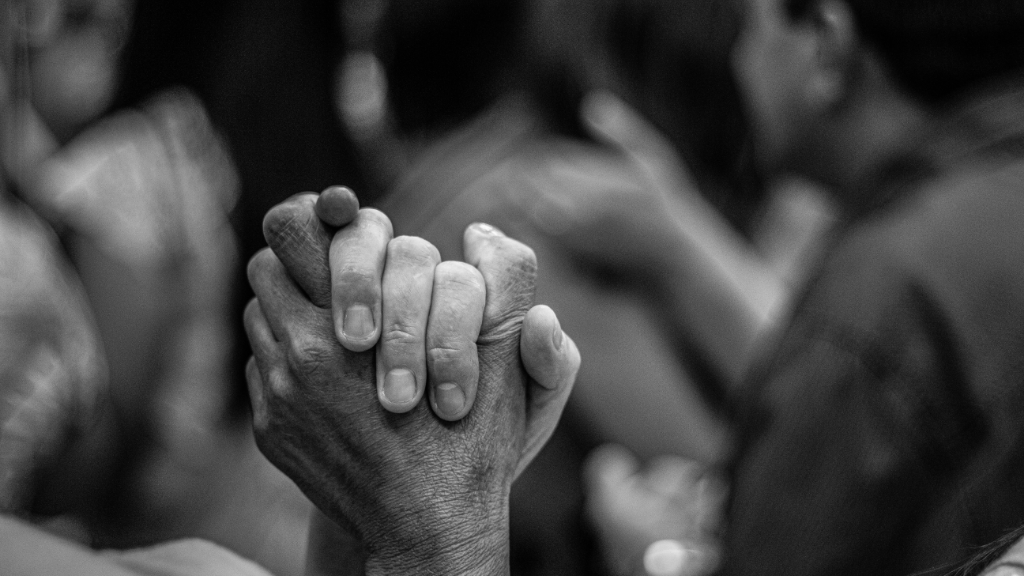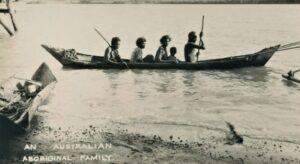Islamophobic feelings in the West have a very long history. The role of demonising Muslims in popular culture is explored in ‘Reel Bad Arabs,’ by Jack Shaheen which analyses how Hollywood manipulates the image of Arabic Muslims. It was also made into a documentary film directed by Sut Jhally. The author examines demeaning imagery of Muslims historically and argues that Muslims have always been portrayed in Hollywood as barbaric, cruel and backward, culminating in the contemporary trope of many Americans blockbusters of a rifle in the hands of Muslim “terrorists” and attempts to explain the motivations behind thesestereotypes. (Shaheen, J. 2003)
Anglo Australia has a racist history of more than 200 years. Post-war immigrants to this country were culturally and linguistically diverse Europeans but also from non-European, non-Christian, and non-White backgrounds. Each new cohort was subjected to racism and discrimination. Poynting and Mason argue the function of ‘othering’ was to pressure newcomers to assimilate, or to practice their differences imperceptibly. This, they argue, was celebrated by the dominant Anglo culture, and by former immigrants who had also assumed ‘mainstream status’ as an integration into ‘the Australian way of life.’ (Poynting and Mason 2007).
This history is popularly used to suggest that the latest spate of racism (for example against refugees or Muslims) is a passing phase. The presumption is that of a rite of passage into Australian society.
Further, this fervour for those living in Australia to conform to cultural dominance infers that it will bring the “benefits of development and civilization” to backward newcomers. (Poynting, Briskman 2018)
Nolan and Budarick have suggested the vilification including violent targeting of Muslims is a phase that will pass in the same way that enmity to the Chinese, the Greeks, the Italians, and the Vietnamese changed and even now there is ‘onward movement’ to South Sudanese or ‘African gangs’ also known as ‘ethnic gangs’ who have become targets of ideologies intent on criminalising and defaming young people from this background (Nolan et al. 2011; Budarick 2018).
However Huntington argues there has been a revival of the clash of civilizations trope (Huntington 1993) and a collective judgement that Muslim values (which are intrinsic to that religion and immutable) will always be incompatible with (as defined above) Australian values. Hence the irrevocable impression of the ‘deviant Muslim.’ That is, there is a substantive difference from the repudiation faced formerly by immigrants and it is has been prolonged (partly by ‘Islamist’ terrorist attacks in other countries) but also because many of the fundamentals of Islam (no contact with non-family member of the opposite gender, opposition to same-sex unions, burqas, allegiance to God before country, abstaining from alcohol and so on) continue to be used to legitimise anti-Muslim speech and acts in contemporary Australia.
Concerns by many Australians they ‘they don’t even try to fit in,’ ‘they don’t belong here, they don’t assimilate’ (Hanson, P. 2018) have been easily exploited by simplistic and populist right wing ideologies. In Australia, a generation since September 2001 has grown up with hostility
to Muslims and hate speech became inexorably normalised, even on the floor of the national parliament. “In many cases, the ability to make judgement about significant ‘others’ or out-groups has been shown to relate more to abstract notions of self and national identity, reproduced in public by mainstream news media and political leaders. In particular, it may reflect an Anglo (or Anglo-Celtic) view on nationalism, which is a hallmark of the ‘new racism’: an assimilationist or ethnocultural view of Australian society which is different from the ‘civic nation’ ideal envisaged by multiculturalism.” (Forest, Dunne, 2006.)
In July 2018 an address given by Australia’s Citizenship Minister, Alan Tudge, to a closed meeting of the Australia/UK Leadership Forum in London (Tudge 2018) employed stereotyped themes such as the prospect of female genital cutting, child marriage, and domestic violence. He warned that there is a call in Australia to mount a ‘muscular’ defense of western liberal values, and an amplification of the values clash narrative, using examples popular with the ‘right’ that Australia was veering toward a separatist multicultural model.
On March 15 2019, 51 Muslims were murdered by a, Australian gunman in Christchurch. A shocked nation responded with the kind of ritual that collectives of people employ to reconcile themselves when they perceive something in their society is broken. NZ PM Jacinda Ardern was universally lauded for her role in leading a heartfelt and human response to the crime. She became a totem whose hijab-wearing head was displayed on the front pages of paper media and public buildings.
Ms. Ardern campaigned on an anti-immigration platform (slashing the intake of foreigners by tens of thousands because migration was blamed for everything from unaffordable housing to stagnant wage growth and overcrowded roads). She shares power with NZ First Party’s Winston Peters (who said ”we are at risk of alien cultures” and that NZ was being “swamped by Asians” and “imported criminal activity”). (Greenfield, da Costa 2017)
NZ was lauded as an humanitarian exemplar for offering to accept 150 of the refugees held by Australia in offshore camps.
New Zealand takes one quarter (per capita) of the number of refugees that Australia does. (AAP – SBS 2018)
The mantra ‘This is not us’ became the headline response from New Zealand.
That nation has had a rising problem with white supremacist hate crimes (Mack, 2017) but the New Zealand government keeps no comprehensive record of hate crimes, despite requests to do so from agencies like the UN more than a decade (the govt said it wasn’t necessary). (AAP – SBS 2019)
A month later, Ms Ardern was in China negotiating trade deals with the Premier who is alleged to be torturing approximately one million Muslims. (Needham, 2019)
Many Muslims were dismayed that an attack on their brothers, sisters and children had been made into an attack on NZ. Ardern made a potent image of a caring leader but the feeling was that such totems of white heroism reduced the Muslim identity and belied the reality of their lived experience as a vilified minority. The horror had been disingenuously whitewashed. Women who had previously argued a feminist opinion that the hijab symbolised Islam’s oppression of women now donned head scarves.
Political leaders who had given poor service to the Muslims community were now speaking on behalf of that community. PM Morrison was not welcome in Muslim communities but still he turned up for photo’ opportunities to hug some Muslims. Morrison is alleged to have “urged the shadow cabinet to capitalise on the electorate’s concerns about Muslims and appeal to the public perception of their “inability to integrate” to gain votes. (Taylor 2011) Then-Immigration Minister Dutton said the former Fraser Government made a mistake letting Lebanese Muslims into Australia. (Anderson 2016)
Muslims were told that the correct response was forgiving but in Islam, that is the right of the families of the victims, not those who were not personally affected and even that was taken from them. Their voice was ignored by mainstream media but clear in alternative media. (Versey 2019)
The response and the continued article published (Vanstone 2019) which demeaned Muslims had, for one writer crushed “…the small hope I’d held that the tragedy of Christchurch might give people pause to think about the damage such words can do. Because of their potential consequences, it’s illegal to incite hatred against people based on
their race. Muslims aren’t protected from them, because as those promoting anti-Muslim hate constantly assert, Islam is a religion, not a race.” (Latham 2019)
They saw Murdoch media which had run nearly 3000 Islamophobic articles in the previous year (Brull 2018) and governments which had spent years vilifying Islam to be at least partly responsible for enabling right wing and white supremacy.
In 2017, a report based on 243 cases of verified Islamophobic incidents collected over 14 months in 2014-15. Muslim women comprised 79.6% of the targets. (Islamophobia Register Australia 2017) One-in-three of those had their children with them at the time. Muslims are generally averse to reporting, so the statistics may represent ‘the tip of the iceberg.’ 98% of the perpetrators were reported as Anglo-Celtic. Physical harassment was the second highest category of incidents (29.6%) … There was a correlation between a rise of Islamophobic incidents with public protests, debate on legislation affecting Muslims.. ” (Ozalp 2017) The vast majority (70%) of hate crimes recorded in NSW are driven by religious and racial bias according to a study of the NSW Police Force bias crime database. (Truu 2017)
Despite the overwhelming bias of vilification of Muslims, anti-discrimination legislation is inadequate. Legal understanding of racism, derive from Western understanding of ‘race’, but do not include discrimination and harassment on the grounds of religion. Australian anti-discrimination and anti-vilifiction Acts are the province of the states race is defined to include ‘ethno-religious origin’ which includes antisemitism, but not Islamophobia so “for a complaint against similar offences when there is not specific legislation against religious discrimination per se, a Jew can obtain reparation while a Muslim cannot. …Though Islamophobia has been recognized as a specific discriminatory practice in the European Union and Australia, present legislations often do not recognize or recognize very restrictively, discrimination on the grounds of religion. And Muslim victims often cannot use anti-discrimination laws on the grounds of race and ethnicity as Islam is not recognized as an ‘ethno-religion’. ” (Bloul 2018)
While Australian culture believes itself to be egalitarian, and to have responded to an attack in a meaningful way, the Muslim community remains, legally and culturally, an outlier for whom finding a place an harmonious relationship to the dominant Australian culture remains a challenge.





